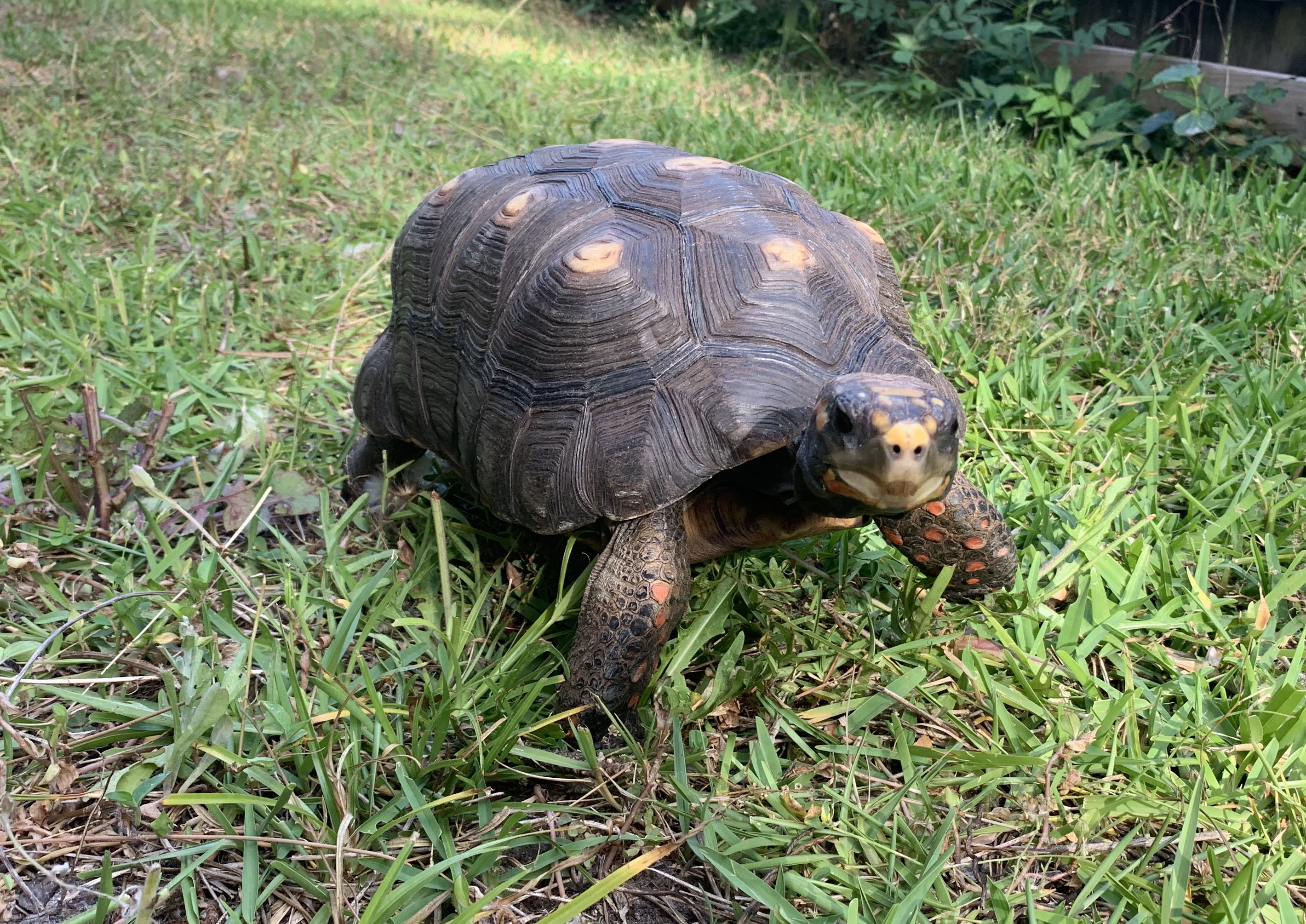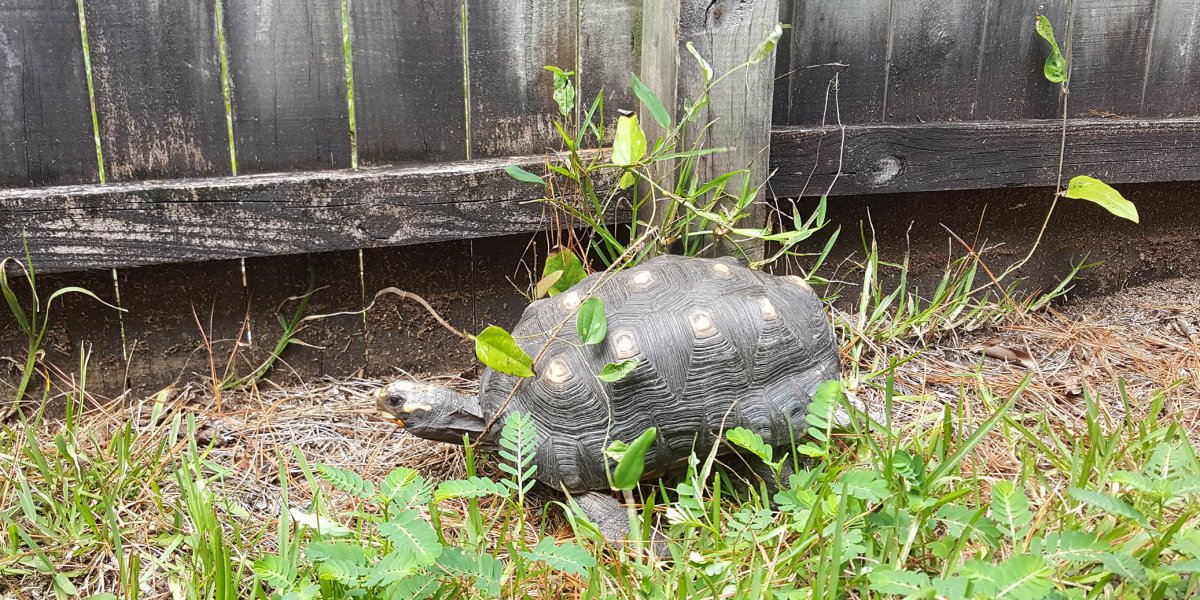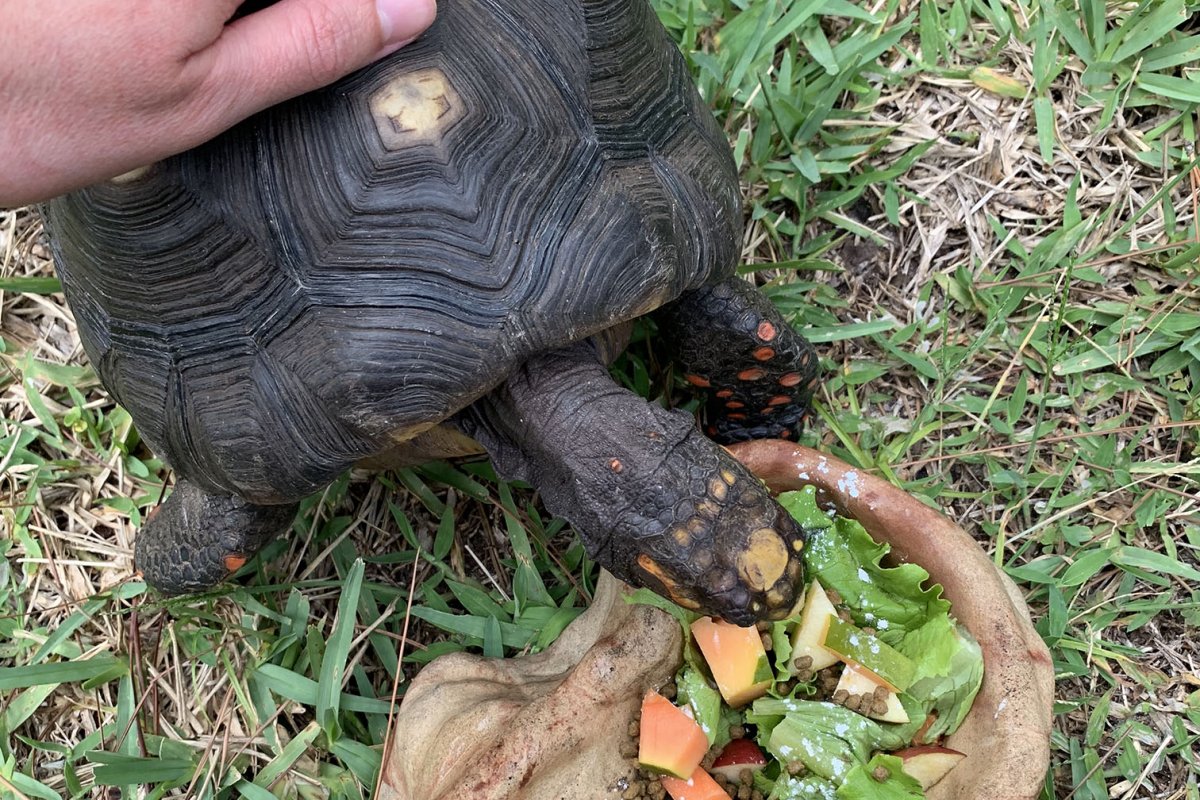In the summer of 2017 we started talking about getting a tortoise to add to our family. We wanted a tortoise that would be large enough to live in our yard without disappearing under the fence, but small enough that our yard’s living space would be adequate for him. A sulcata tortoise sounded like a lot of fun, and they were readily available, but the males grow very large, and it was almost impossible to tell from the baby tortoises which was male or female. We foresaw some issues loading one into the back of our car to go to the vet. And, later we learned that Sulcatas can dig massive tunnels and basically leave a yard whenever they want (Reptiles magazine link). So, we tried to ignore their cute faces at the store. Russian and Egyptian tortoises seemed like a very manageable size, but possibly a little small for being out in the yard, and they are both used to more arid climates than the massively high humidity we had in the Southeastern United States.
So, we eventually came around to looking at redfoot tortoises. Their medium size makes them manageable, they only dig when breeding, and they thrive in a tropical climate. Our local exotic store found one for us that had originally lived at the St. Augustine Alligator Farm in Florida, and he had then gone to a tortoise keeper who had too many males and needed to find him a new home. We had a brief acquaintance with the tortoise at the store, where we learned little about him except that he tended to ignore us, and that he was not passionate about strawberries.
We took him home and named him Charr, after the romantic Krogan warrior in Mass Effect 2. Our Charr truly did not care much for people, and he would often flinch whenever someone moved near him. He also hated being indoors with a passion. Indoor tortoise, massive amounts of poo everywhere. He made it very clear.
However, Charr did have a passion for food, and we quickly discovered his favorites. Papaya, kiwi and green beans were fan favorites, and he would also gobble down different types of melon. Naturally, since romaine, red-leaf lettuce, and turnip and mustard greens were considered highly nutritious and healthy, Charr would turn his nose up at them. Furthermore, while we had done lots of research and learned that redfoot tortoises ate more fruit than other tortoises, we did not realize that meant he would not eat any of the grasses in the yard, or the weeds. So, we got to work planting things in the yard that were tortoise-safe and that Charr might eat, like prickly pear cactus, aloe and hibiscus. And, I got to work chopping up his fruit into very small pieces so he would accidentally eat a bite or two of lettuce while munching on a kiwi.
Charr’s interest in food gradually made it easier for us to get closer to him. He would see us and approach for food, and he would also approach new people who brought food. Eventually, he started coming over just to see what we were doing, to be nosey if we were working in the yard, and he would occasionally stay for shell scritches.
Now that we’ve had Charr for a couple of years, his dislike for being indoors has lessened as well. If the back door is open, he will sometimes approach it to beg for food. If the door stays open, he will occasionally wander into the house of his own accord and start smelling things around the house. In the winter months, when he needs to be inside, there has been a sharp decrease in the stress poo incidents of years gone by.





